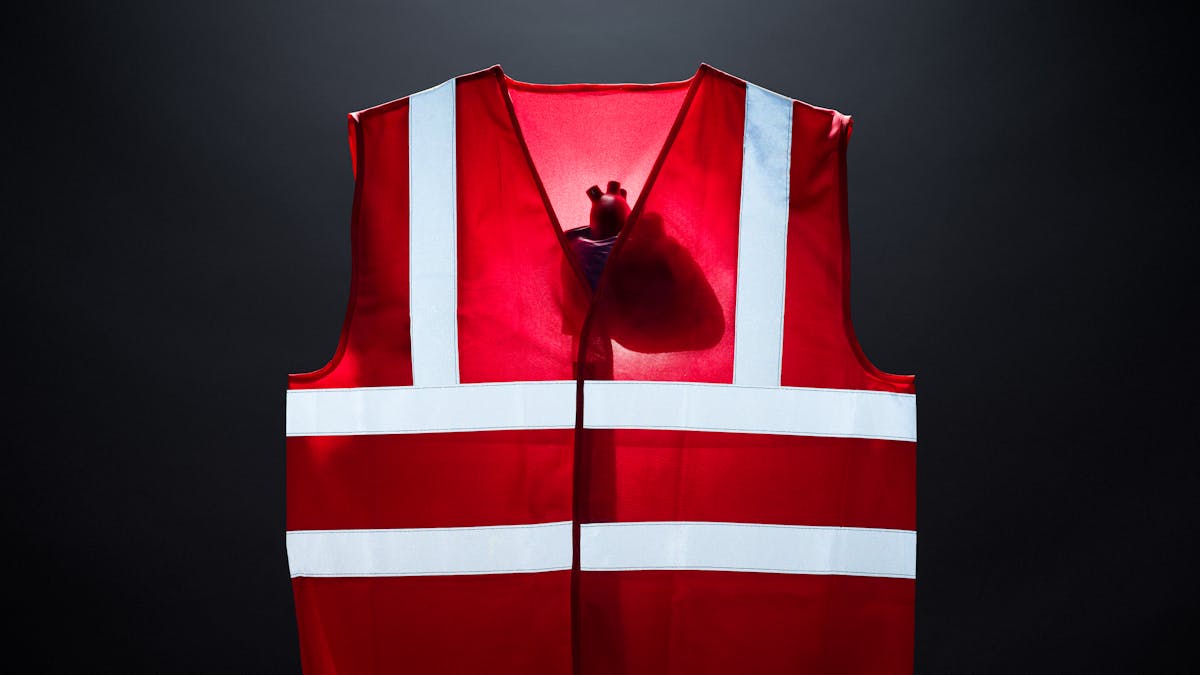Joanna Cannon’s book ‘Breaking and Mending’ recounts vivid stories from her time as a junior doctor. In this extract, impressive teamwork in A&E restarts a woman’s heart, but the author comes to realise there are many, less dramatic, ways to save lives.
Healing hearts and saving lives
Words by Joanna Cannonphotography by Benjamin Gilbertaverage reading time 6 minutes
- Book extract

There are many reasons why people decide to go to medical school, but if you had asked each of us on that first day why we were there, we would have told you it was because we wanted to make a difference. We would have told you it was because we wanted to do something valuable – something important. We would have told you it was because we wanted to save lives.
Saving lives is a big crowd-puller when it comes to medical school entry, and you can truly understand it. Many years later, on my last placement before finals, I would find myself in the emergency department, the not-quite-a-doctor, trying desperately to avoid getting in anyone’s way.
On one of my shifts, a woman was brought in by ambulance. A woman who was in her forties and usually in good health. A woman whose presenting complaint was a racing pulse and a feeling that something terrible was about to happen. A sense of impending doom. The general opinion was that she was having an anxiety attack (or rather, just having an anxiety attack, because society still likes to put ‘just’ in front of anything to do with mental health), and the woman sat in a cubicle in the assessment unit, and waited for a series of routine tests.
Ten minutes later, she went into cardiac arrest.
She slid, very gently, from the chair and onto the floor, and her heart stopped beating. If you have ever wondered about the definition of teamwork, you will find it on a crash call. It’s a sharp, blinding algorithm of efficiency. A crash call has its own tribe, its own trolley, its own rules, and, as a medical student, I was told I should stay and watch. In the very next cubicle to the woman there just happened to be a consultant cardiologist seeing another patient, and he appeared from behind a curtain and took over.
And the cardiologist brought the woman back to life.
In a fusion of machinery and drugs and experience, her heart began to beat again. The cardiologist had managed to pull her away from wherever she had gone and bring her back into the world. She was resurrected. It was fast and clean. It was uncomplicated. The woman even tried to stand up (no, really). It was the first crash call I’d witnessed and I was mesmerised. I thought all crash calls would be like that (they are not).
In a fusion of machinery and drugs and experience, her heart began to beat again.
The woman was taken to somewhere more appropriate than a cubicle in an assessment unit and the floor was cleared of debris. The cardiologist turned to his audience and said, “She was right about the impending doom, wasn’t she?” and he disappeared again behind a curtain – where I heard him apologise to his patient for leaving so abruptly, because cardiologists always seem to possess an impeccable sense of timing. The department carried on.
Don’t ask how it feels
I did not, however, carry on. I was transfixed by what I had seen. I wanted to ask the cardiologist how it felt – how it felt to return a life to someone. How it felt to do a job where you could, at any moment, become a hero. How it felt to argue with God. But I didn’t. I didn’t ask him any of those things, because I had learned very quickly that in medicine and surgery, unless you enjoy being looked at in a very curious way, you do not ask people how something feels.
Instead, my gaze followed him around A&E for the rest of the afternoon, and, whenever I spotted him, I thought: “There is the man who saved a woman’s life. There is the cardiologist. There is a hero.”
On that first day of medical school, if you had asked someone what their chosen specialty was going to be, cardiology would have been a very popular answer. “It’s the prestige,” people will tell you, because in medicine, there is a certain hierarchy of body parts, which I have never quite understood. When it comes to kudos, hearts trump brains, brains trump bones, bones trump skin. Kidneys would, of course, trump everything, but they’re far too clever to involve themselves in such shenanigans.
All I’d ever wanted to do was psychiatry (it was the whole reason I was sitting in that lecture theatre in the first place), although I would, in time, glance with awe at some of the other rotations as I passed through – the grace and compassion of palliative medicine, the utter joy of care of the elderly. But at the end of a very long road, I knew that psychiatry was waiting for me, and knowing that was sometimes the only thing that kept me going.
As I travelled that road, though, I would sometimes remember the cardiologist and I would feel a whispering of regret that I would never know how it felt to kneel on the floor of an A&E department and to save someone’s life.
It was only much later, when I finally reached the end of my journey, that I learned something vital. Perhaps the most vital thing you can ever learn as a junior doctor. I learned that saving a life often has nothing to do with a scalpel or a defibrillator. I learned that lives are not just saved on the floor of an A&E department or in a surgical theatre.
Lives are also saved in quiet corners of a ward. During a conversation in a garden. On a sofa in a TV room, when everyone else has left. Lives can be saved by spotting something lying hidden in a history. Lives can be saved by building up so much trust with a patient, they will still take a medication even if they don’t believe they need it. Lives can be saved by listening to someone who has spent their entire life never being heard.
I learned that returning a life to someone very often has nothing to do with restoring a heartbeat.
‘Breaking and Mending’ is out now.
About the contributors
Joanna Cannon
Joanna Cannon is the author of the Sunday Times bestsellers ‘The Trouble with Goats and Sheep’, which was published in 15 languages, and ‘Three Things About Elsie’, longlisted for the Women’s Prize for Fiction 2018. Her novels have sold over half a million copies in the UK alone. Her love of narrative had always drawn her to psychiatry, but it wasn’t until her thirties that she decided to go to back to university to study medicine. Before specialising in psychiatry, she rotated through a series of hospital jobs, from A&E to palliative care.
Benjamin Gilbert
Ben is a senior photographer for Wellcome. He is happiest when telling stories with his photographs, whether that be the health implications of rural-to-urban migration in India, or the dedication of the workers who power the NHS.

